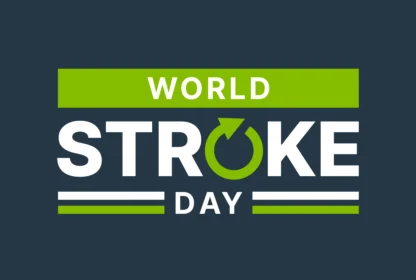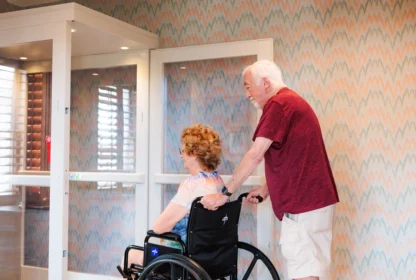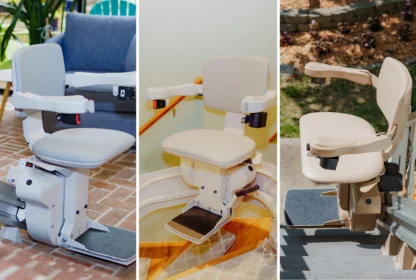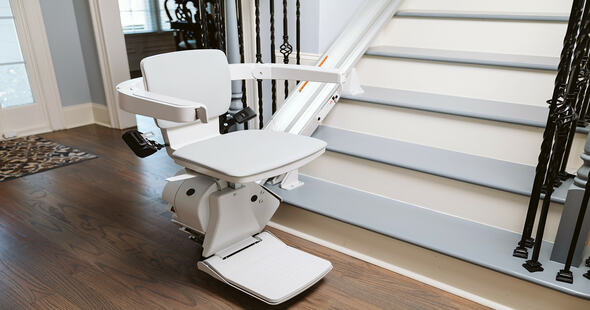
Q. What are stair lifts?
A. Commonly called chair lifts, stair chairs, and stair gliders, a stairlift is an electromechanical device used to assist people traveling up and down stairs.
- Whether you have 3, 4, or 20 stairs, stair lifts are a simple and economical solution to reduce fall risks associated with navigating stairs.
These popular accessibility solutions consist of a seat with a footrest attached to a “carriage” that travels along a rail mounted to the stairs. The machine’s carriage contains batteries, safety switches, circuits, and a motor. Operating the lift is as simple as pressing the button in the direction you wish to travel. Battery-powered, the lifts only require being connected to a standard electrical outlet for recharging when not in use. While standard straight stair lifts provide access to two floors, custom curved stair lifts are designed to traverse complex staircases and can travel up to four floors.
Q. How much do stair lifts cost?
A. The cost of a stair lift depends on the user(s) height and weight and the design and location of the staircase. Purchasing a lift is an investment in independence, and stair lifts are often the most economical solution to maintain full access to the home you love.
- The most affordable stair lifts start around $3500. These lifts are a simple solution for straight staircases with adequate space at both landings.
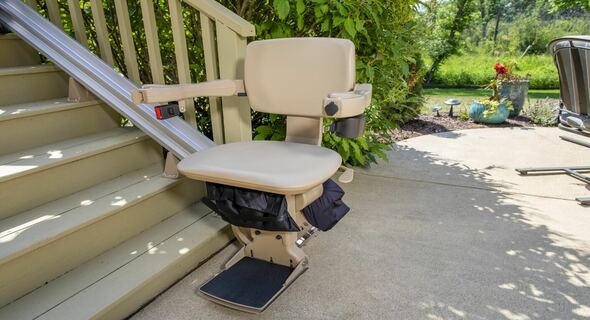
Stair lifts with upgraded features, such as power swivel seats and automatic footrest, or are rated for outdoor use, can cost approximately $4500-$7500. Homes with turning stairs often have multiple staircases separated by a landing. In most cases, the best solution is a custom-made curved stair lift that can bend around the wall and provide seamless access to each level.
The cost of a custom curved stair lift can vary greatly, but consumers can expect to spend between $10,000 and $20,000 depending on how many levels they wish to access. Although the cost of a curved stair lift may be higher than some expect, many of our customers tell us that it was the most affordable option to stay in the homes they love.
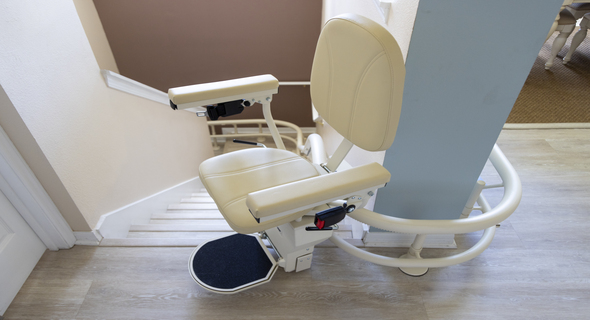
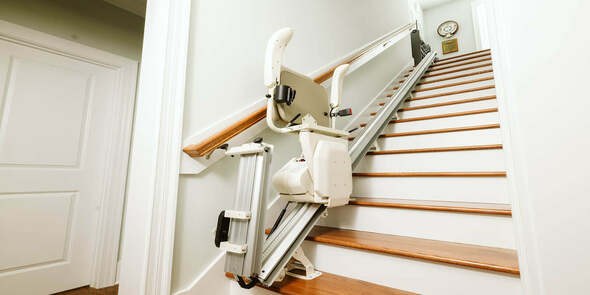
Q. What is a folding rail?
A. Depending on the layout of the home, some houses will require an option called a folding rail. This rail upgrade includes a hinge in the lower section of the rail or track that allows it to flip and store clear of the lower landing.
Common home layouts that require a folding rail:

Equipping your straight stair lift with a folding rail may be necessary to prevent blocking a doorway or a hallway. Don’t worry – our folding rails are stress free! Our manufacturer partners all offer an automatic version for effortless use.
- Click here to see the Harmar Pinnacle auto-mechanical folding rail in action.
- Click here to learn about the Bruno manual and powered folding rail options.
- Click here to see the Handicare Slide-Track – a folding rail alternative.
Q. Which stairlift is best?
A. The “best stair lift” is one that best accommodates the user(s), is minimally intrusive in the staircase, and offers dependability that you can trust. The best stair lift would vary depending on someone’s needs and the design of the staircase.
- 101 Mobility is proud to offer several industry-leading manufacturers to ensure our customers get the best stair lift for them – not someone else.
- Whether you need a straight stair lift, a curved stair lift, or an outdoor stair lift,101 Mobility has the accessibility solution to give you full access to your home.
Q. Does Medicare cover stair chairs?
A. While Medicare does not cover the cost of a stair lift, some Medicare Advantage Plans may.
- Medicare considers installing a stairlift a home modification and therefore does not offer reimbursement. For more information on what Medicare does cover, click here.
Q. Are stairlifts covered by Medicaid?
A. Medicaid’s Home & Community Based Services, or HCBS Waivers, allows qualified individuals financial assistance when purchasing a stair lift or other related equipment.
- The objective of Medicaid’s Home & Community Based Services 1915(c) is to meet the needs of people who prefer to receive long-term care services in their homes rather than in an institutional setting. Available funding and criteria for coverage vary by state. Click here to view available Medicaid Waiver Programs in your state.
Q. Are stair chairs tax deductible?
A. The Internal Revenue Service considers the purchase of a stair lift or related equipment a “Capital Medical Expense” if the equipment was prescribed by a healthcare professional for you, your spouse, or dependent(s).
This applies to any home accessibility solutions that are prescribed and purchased out of medical necessity. This includes straight stair lifts, curved stair lifts, modular ramps, and vertical platform lifts. If you have questions on tax deduction eligibility, please consult your tax advisor.
Q. Can stair gliders be attached to walls?
A. When riding a stair lift, the weight of the lift and the user are naturally transferred down onto the stairs. In almost every circumstance, a stair lift will only be attached to the stair treads and will not attach to any walls.
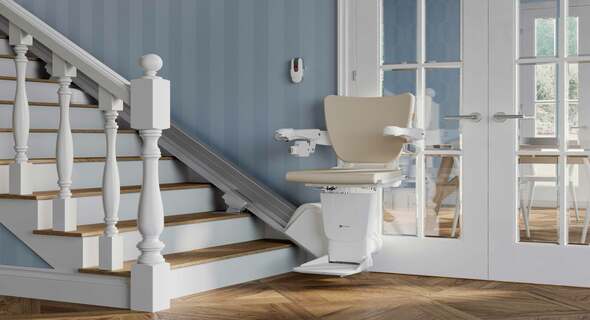 Most lift installations require securing 4 to 6 attachment brackets to the tread of the steps. Each attachment bracket is secured with 3 or 4 of the bolts provided by the manufacturer. In many cases, removing a stair lift may only require patching a few holes to repair the home to its original condition.
Most lift installations require securing 4 to 6 attachment brackets to the tread of the steps. Each attachment bracket is secured with 3 or 4 of the bolts provided by the manufacturer. In many cases, removing a stair lift may only require patching a few holes to repair the home to its original condition.
*All 101 Mobility locations are independently owned and operated.
*Pricing may vary by market.

